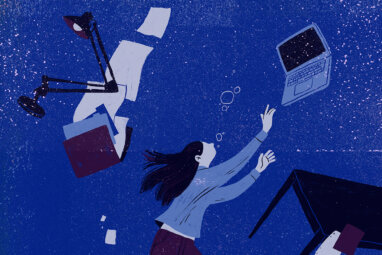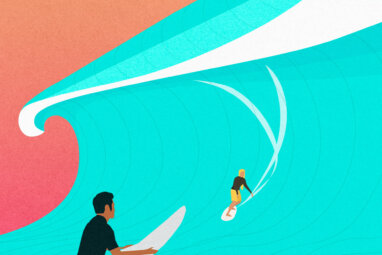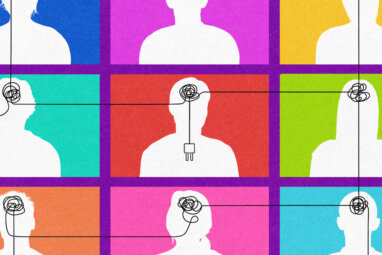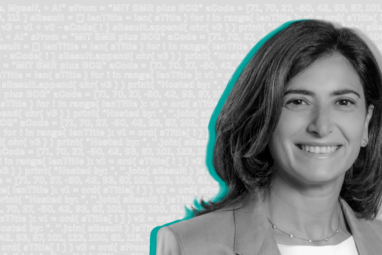Managing the Distraction-Focus Paradox
Curiosity and concentration are often at odds — but they needn’t be.
In the time you’ve set aside to read this article, you’re likely to check your phone. You’ll probably see notifications for emails or text messages pop up on your lock screen. You won’t resist. Once you’ve started thumbing through your apps, you’ll check Twitter, too. If you use Twitter as your media feed, you may click through to an article about blockchain or vacations in Barbados. I’ll be lucky if you make it back here.
Nicholas Carr, author of The Shallows: What the Internet Is Doing to Our Brains, would have you believe that your behavior is a serious problem, that the ephemera of the internet are hijacking your ability to concentrate and think.1 I disagree — or rather, I’d argue that, in today’s workplace, the seductive clamor of the web is a reality from which there’s no retreat. In the age of big data and ever-more-powerful processors, we must absorb more data at faster speeds. Those who’ll succeed in this distraction-filled world as thinkers, managers, and innovators will need to combine two seemingly opposing traits. They must be able to absorb diverse information from a wealth of sources, and they must be able to focus intensely. I call this the distraction-focus paradox. While these two qualities seem contradictory, together they make up the skill set for managing your most valuable personal resource — your attention — in a hyper-connected age.
Yes, these abilities have always been important — but their combination will become more so in the coming years, as social media and mobile computing continue to advance. (See “Skill Set for a Connected World,” which presents the net effect of differing combinations of these essential skills.)
Knowledge workers need diverse information. Research has repeatedly shown that diversity in mental models — that is, how you interpret and see problems — leads to better problem-solving and more innovation.2 That’s a theme that courses through Misbehaving: The Making of Behavioral Economics, the memoir of Richard Thaler, the Charles R. Walgreen Distinguished Service Professor of Behavioral Science and Economics at the University of Chicago Booth School of Business, and the 2017 winner of the Nobel Prize in economics.3 As a young scholar, Thaler kept noticing anomalies that defied standard economic models, like the so-called endowment effect — the tendency of people to overvalue things they already own. Even as an established scholar, his curiosity has ranged widely, as he has published papers on such topics as why NFL teams make irrational decisions in the annual player draft. To help make sense of such phenomena, he collaborated with psychologists.
People like Thaler who seek out varied inputs have been shown to be consistently better forecasters than those who rely on more limited information diets.4 And the need to avail oneself of a variety of perspectives has only increased. One of the dangers of the rise of social media is that people’s networks are insufficiently diverse — and consequently risk becoming echo chambers.5 This trend is exemplified by the notions of filter bubbles and “fake news.”6 We connect more and more, but often only with people or publications that share our views.
Compare the experience of browsing at a bookstore a decade or so ago with buying a book online today. In an old-fashioned store, as you ambled over to the business section, you might happen across the archaeology and anthropology books. If you had even a glimmer of interest, you’d find yourself studying the spines. Maybe you’d end up buying Jared Diamond’s surprise best seller, Guns, Germs and Steel.7 Had you read that 1997 tour de force, you would have learned about the original domestication of plants and animals and the evolution of disease immunities and how both of those influenced the distribution of the world’s wealth. Today, if you search for the latest business best seller on Amazon, you’re highly unlikely to receive such an esoteric recommendation.
Tapping into diverse networks also fosters innovation. Much innovation has originated from individuals relying on collaboration with open networks — and research has even shown that people with more diverse Twitter feeds tend to generate better ideas.8 So people need to train themselves to seek out sources with heterogeneous views. Indeed, when I refer to “distraction,” you could think of that partly as the cognitive load that comes from immersing yourself in a more diverse network.
And yet, it’s also important to be able to focus intensely on a specific problem, particularly as expectations of instant responses to emails, alerts, and notifications nag at our attention. Ours is the age of distraction, good and bad. The web blesses us with news from Belarus and the latest advances in biology and bedevils us with listicles and personality quizzes on such weighty topics as which dog breed or which character from The Simpsons you most resemble.
As the digital sirens continue to sing, maintaining energized, deep focus matters even more. Some of the proponents of this line of thought, including Cal Newport, author of Deep Work, have argued that the ability to focus on a demanding task is the way to differentiate yourself in a distracted world.9 This kind of focus entails winnowing the demands and “productive distractions” vying for your attention and time. It also requires the ability to shift between perspectives: seeing the details and the broader context. If you can focus in this way, you can prioritize what to think about (you can better plan) and you can know how to think about it (you can better process). But being focused does not mean behaving like a robot. Focus is the deliberate deployment of your attention. You lock in, rather than zone out.
As is so often true, too much of either of these information-age virtues isn’t beneficial, either. If you ramble around the web, pointing and clicking willy-nilly without a goal or guidelines — without a focus — the white noise will block out your ability to hear anything worthwhile. You won’t devote enough time to critical tasks, nor will you distinguish important issues from irrelevancies. But, if you are too focused and deprive yourself of varied views, you run the risk of lacking creativity and insight. Research has shown that excessive focus can exhaust a person’s attention and lead to ill-conceived decisions and less collaboration.10
Yet having too little information and too little focus seems even worse. Who’d settle for that? Of course, that’s the situation we so often encounter in our digitized, socially connected world: We’re bombarded with Tweets, emails, and Facebook and LinkedIn requests from friends and colleagues, preventing us from finding time to seek out fresh insights or to focus fully on the tasks we consider most important.
The goal is, of course, the Golden Mean — a balance between diversity of input and intensity of focus. If you can achieve that, you’re better equipped for our distracted age. This skill set can be understood as a form of meta-cognition — like having a personal project manager inside your head. These skills are analogous to qualities possessed by the best leaders and organizations: consistency and agility.11
People who can balance curiosity and concentration fit into the metaphor of the “T-shaped professionals” popularized by Ideo, the design consultancy. The vertical leg of the T conveys focus (expertise and insight) while the horizontal one conveys open-mindedness (empathy and collaborative curiosity). According to Ideo’s CEO, Tim Brown, T-shaped people can focus deeply on their particular domains while also interacting productively with colleagues from different disciplines. These complementary characteristics are often needed at Ideo when people solve specific problems.12
So how can you enhance your T-shaped qualities? First, you need to assess your abilities and position yourself in the skill set matrix. Knowing your strengths and weaknesses, you can then seek to improve. If you score low on seeking diverse input, challenge yourself to find new sources of information that broaden your knowledge and contradict your assumptions. Or try being your own devil’s advocate and asking yourself, routinely, What would be the opposite perspective on this problem — and what type of information would support it?
If you score low on focus, turn off your phone (or at least your notifications) and carve out blocks of time for undisturbed thinking and reading. Philanthropist Bill Gates used to make this a practice when he was running Microsoft. He’d take a “think week” twice a year, retreat to a lakeside cabin, read, and ponder his company’s future.13 These days, Gates posts thoughts about the books he has read lately on his blog, “GatesNotes,” and invites favorite authors to his office for lunch.14 And Gates’ good friend, billionaire investor Warren Buffett, is likewise famed for being a “learning machine” who, by his own admission, often sits in his office and reads all day.15
You can also team up with collaborators who have strengths that complement yours. Or you can just work on getting better: Like many skills, self-questioning and focus can be improved through deliberate practice.16
We’re living in an age of uncertainty, driven by technological and social change: Cars are driving themselves, drones will soon be delivering packages, and the “free-agent economy” is demanding professionals who can reinvent themselves throughout their careers. To thrive in these turbulent times, you must be capable of “distracted focus.”
References (16)
1. N.G. Carr, “The Shallows: What the Internet Is Doing to Our Brains” (New York: W.W. Norton & Co., 2010).
2. S.E. Page, “The Difference: How the Power of Diversity Creates Better Groups, Firms, Schools, and Societies” (Princeton: Princeton University Press, 2007).










Comment (1)
Shrikant Navelkar